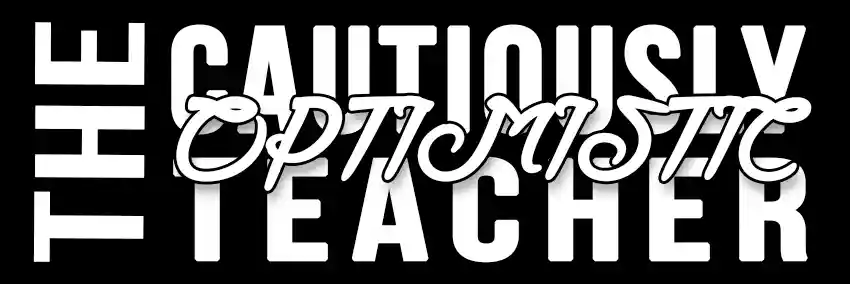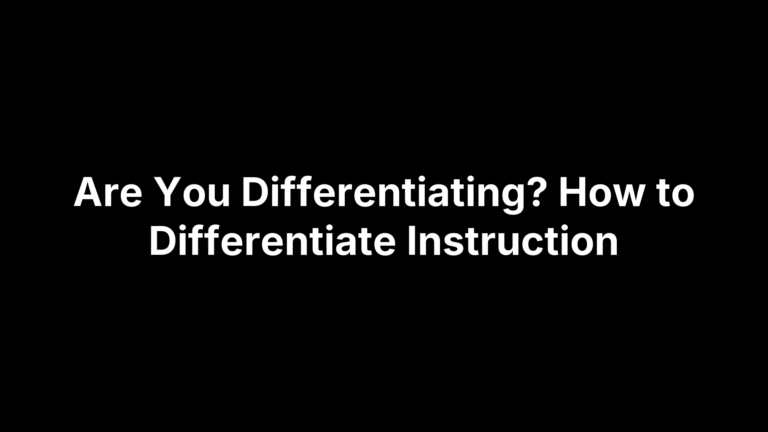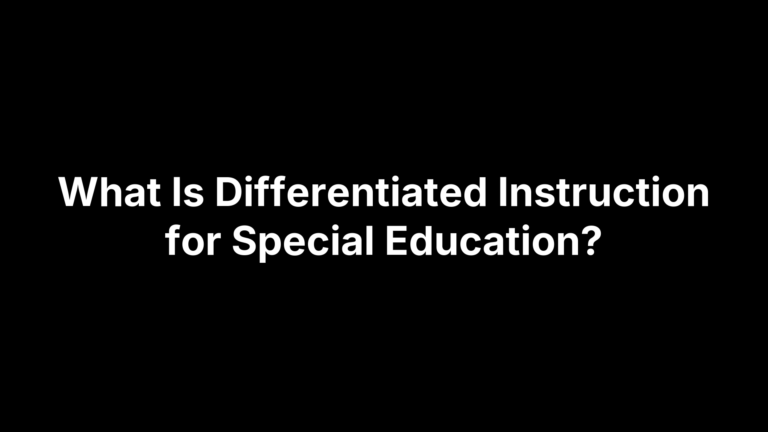Guide to Implementing Tiered Assignments in Classrooms
In the evolving landscape of modern education, differentiation stands out as a keystone in successful teaching. At its heart, differentiation is the acknowledgment that each student brings a unique set of skills, experiences, and needs to the classroom. Catering to these diverse backgrounds not only respects each learner’s individual journey but also maximizes their potential for success.
One powerful method to achieve this differentiation is through the use of tiered assignments. These assignments, designed to cater to varying levels of student readiness, offer educators the flexibility to meet learners where they are. Instead of a one-size-fits-all approach, tiered assignments open avenues for students to engage with material in ways that resonate most with their learning styles and proficiencies.
However, before digging into the mechanics of tiered assignments, it’s crucial to fully grasp the concept of a diverse classroom. The term “diverse learners” isn’t just a buzzword. It’s a reality that every educator must embrace if they’re to provide meaningful and equitable learning experiences for all their students.
Understanding Diverse Classrooms
Definition and Characteristics of Diverse Classrooms
A diverse classroom is not simply a mix of students from different backgrounds. It’s a rich tapestry of learners, each with distinct abilities, experiences, cultures, languages, interests, and ways of perceiving the world. While it’s easy to think of diversity purely in terms of ethnicity or socioeconomic status, it extends well beyond these factors. Inclusivity in education also encompasses learners with different cognitive abilities, learning preferences, and personal challenges, be they physical, emotional, or psychological.
Some key characteristics of diverse classrooms include:
- A range of learning abilities: from gifted and talented students to those with learning disabilities.
- Varied cultural, linguistic, and ethnic backgrounds.
- Differences in socioeconomic status, which might influence access to resources and prior educational experiences.
- Varied personal histories, family structures, and lived experiences that influence a student’s perspective and approach to learning.
The Significance of Acknowledging Individual Student Needs
Recognizing and addressing individual student needs is not merely a best practice – it’s essential for creating an equitable and inclusive educational environment. Here’s why:
Personalized Learning: Customized learning experiences increase engagement and retention. When students see themselves in the curriculum and feel that their needs are understood, they’re more likely to invest emotionally and intellectually in their education.
Building Confidence: Students who consistently feel out of their depth or, conversely, unchallenged, can become demotivated. By catering to each student’s readiness level, educators can boost their confidence and encourage a love for learning.
Preparing for the Real World: Our global society is diverse. By fostering an environment that respects and celebrates these differences, educators are preparing students for a world where they’ll interact with people from all walks of life.
What are Tiered Assignments?

At their core, tiered assignments are designed with the diverse classroom in mind. They are tasks or projects that are modified according to the learner’s level of readiness, ensuring that all students are challenged appropriately. This doesn’t mean that objectives change for different students; rather, the complexity, depth, or mode of an assignment might vary.
For instance, in a reading exercise, while one group might work on identifying basic story elements, another might delve deeper into analyzing themes and motifs. Though the material is the same, the way each student interacts with it differs based on their readiness and comprehension level.
Tiered assignments are a bridge, ensuring that each student has access to learning that’s rigorous yet within their zone of proximal development—the sweet spot where learning happens most effectively. This method respects the individual needs and abilities of each student, allowing them to grow at their own pace while still achieving common learning objectives.
Tiered Assignments: Definition and Core Principles
Tiered assignments, as the name suggests, involve creating layers or “tiers” of tasks that cater to different levels of student readiness. While the core learning objective remains consistent for all students, the process, complexity, and sometimes the product can vary to offer an appropriate level of challenge.
Core Principles
Consistent Learning Objectives: The heart of tiered assignments is ensuring that while tasks may differ, the fundamental goal or learning objective remains consistent for all students.
Flexibility: These assignments are designed to be adaptable based on student assessment, ensuring that as students grow and their needs change, the assignments can be adjusted accordingly.
Equity, Not Equality: The aim isn’t to give everyone the same assignment but to ensure each student has an assignment that offers them an equitable chance to succeed and be challenged.
Responsive Design: Tiered assignments respond to individual differences. Educators should be ready to modify assignments based on ongoing assessments and student feedback.
Benefits of Tiered Assignments in Diverse Settings
Personalized Learning Paths: Students can engage with materials in a way that resonates with their individual strengths and readiness levels.
Enhanced Engagement: When students feel neither overwhelmed nor underwhelmed by assignments, they’re more likely to be engaged and invested in their work.
Increased Achievement: By working within their zone of proximal development, students are more likely to grasp and retain the content.
Collaborative Environment: Different tiers can encourage collaboration among students, allowing them to learn from one another and appreciate diverse perspectives.
Professional Development for Educators: Designing tiered assignments pushes educators to think critically about their teaching methods, fostering growth and innovation in their pedagogical approaches.
Steps to Implementing Tiered Assignments
Assessment of Student Readiness: Begin with a pre-assessment to gauge the current skills, understanding, and readiness levels of each student.
Design Varied Tasks: Based on the assessment, design tasks with different levels of complexity, ensuring they all align with the core learning objective.
Group Students: Depending on the assignment, group students by similar readiness levels. Remember, these groups should be fluid, allowing students to move between them as they progress or face challenges.
Provide Clear Instructions: Each tier should have clear instructions, so students understand what’s expected of them and how they can achieve success.
Monitor and Adjust: Continuously monitor student progress. Adjust the assignments or move students between tiers as necessary, based on their performance and feedback.
Facilitate Peer Collaboration: Encourage students to collaborate within and across tiers, fostering a rich learning environment where students can learn from each other’s varied experiences and perspectives.
Review and Reflect: After the assignment, take the time to review its effectiveness. Reflect on what worked, what didn’t, and how the process can be improved for future tiered assignments.
Assessing Learner Readiness and Levels

Before implementing tiered assignments, it’s crucial to understand where each student stands in terms of skills, knowledge, and readiness.
Diagnostic Assessments: These are pre-assessments that help determine students’ prior knowledge and skills in a particular area. They can include quizzes, discussions, or tasks related to the upcoming content.
Observations: Regularly observe students during class activities. Noticing how they approach tasks, the challenges they face, and the strategies they use can provide valuable insights.
Student Feedback: Encourage students to self-assess and provide feedback on their comfort level with the material. This can be done through reflection journals, surveys, or one-on-one discussions.
Continuous Assessment: Rather than just relying on a one-time pre-assessment, continually assess students throughout the unit or course to adjust tiers as needed.
Designing Assignments with Varying Complexities
With a clear understanding of student readiness, assignments can be designed to cater to varying levels of complexity.
Bloom’s Taxonomy: Utilize Bloom’s taxonomy to create tasks at different cognitive levels, from basic recall to more complex analytical and evaluative tasks.
Varied Resources: Provide resources at different reading levels or complexities to cater to diverse learners.
Differentiated Product: Allow students to showcase their understanding in different ways, whether through essays, presentations, projects, or other mediums.
Incorporating Multiple Intelligences and Learning Styles
Recognizing that students have different strengths and preferences in how they learn is key. Incorporating Howard Gardner’s theory of multiple intelligences can provide varied entry points for learners.
Linguistic and Logical: Traditional reading, writing, and mathematical challenges cater to these learners.
Visual-Spatial: Integrate diagrams, charts, and opportunities for artistic expression.
Kinesthetic: Include hands-on activities or movement-based tasks.
Musical: Integrate music, rhythms, or sound-based activities.
Interpersonal and Intrapersonal: Encourage group activities or self-reflection tasks.
By diversifying tasks, students can engage with the material in ways that resonate most with their personal strengths.
Strategies for Effective Management
Implementing tiered assignments requires meticulous organization and management to ensure smooth execution.
Transparent Communication: Make sure students understand the purpose of tiered assignments and how they’re designed to benefit individual learning.
Structured Workspace: Design the classroom layout to facilitate group work, individual tasks, and teacher-led instruction seamlessly.
Regular Check-ins: Regularly check in with students, ensuring they feel supported and providing guidance where necessary.
Peer Support System: Encourage collaboration and peer support, so students can leverage each other’s strengths.
Utilize Technology: Digital platforms and tools can help in creating, distributing, and monitoring tiered assignments effectively.
Feedback Loop: Create a consistent feedback system where students can express their feelings and concerns regarding the assignments, allowing for continuous refinement of the process.
Optimizing Tiered Assignments: Resources, Techniques, and More

Tools and Resources for Tracking Progress
Effectively tracking student progress is essential to ensure that tiered assignments are meeting their intended outcomes. Here are some tools and resources:
Learning Management Systems (LMS): Platforms like Google Classroom, Canvas, or Moodle can help manage assignments, track submissions, and monitor student engagement.
Differentiated Lesson Planner: The Teachers’ Blog Differentiated Lesson Planner makes tiered tasks a cinch.
Digital Portfolios: Platforms like Seesaw or Portfolium allow students to document and reflect on their learning journey, providing a holistic view of their progress.
Online Assessment Tools: Quizzing platforms like Kahoot or Quizizz offer instant feedback, helping gauge student understanding in real-time.
Progress Trackers: Spreadsheet tools, like Google Sheets or Excel, can be used to create custom progress trackers, charting student growth over time.
Grouping Techniques: Homogeneous vs. Heterogeneous
Homogeneous Grouping: This method groups students with similar readiness levels or abilities together.
Pros: Allows for targeted instruction; students can move at a similar pace.
Cons: Risk of creating ability “labels” or limiting peer-to-peer learning opportunities.
Heterogeneous Grouping: This method mixes students of different abilities and readiness levels.
Pros: Encourages peer-to-peer support and diverse perspectives; can boost confidence for lower-achieving students.
Cons: Risk of advanced students dominating tasks or some students feeling overwhelmed.
Best Practice: A combination of both methods can be effective, varying groupings based on the task’s objective and desired outcomes.
Feedback Mechanisms for Continuous Improvement
Formative Assessments: Regular, low-stakes assessments can provide ongoing feedback to both educators and students.
Peer Review: Encourage students to review and provide feedback on each other’s work, fostering a collaborative learning environment.
Self-Assessment: Equip students with rubrics or reflection templates to evaluate their own work and set future goals.
Regular One-on-Ones: Individual meetings with students can offer deeper insights into their experiences and challenges.
Challenges and Solutions
Challenge: Differentiating instruction might be seen as favoritism or unfair treatment.
Solution: Ensure transparent communication about the purpose and benefits of tiered assignments to both students and parents.
Challenge: Designing multiple versions of assignments can be time-consuming for educators.
Solution: Collaborate with fellow teachers, tap into shared resources, or use adaptive learning platforms that auto-adjust based on student performance.
Challenge: Some students might feel demotivated if they perceive their tier as “lower” than their peers.
Solution: Emphasize the value of growth and the idea that everyone’s learning journey is unique. Rotate groups regularly to avoid fixed labels.
Conclusion: Championing Tiered Assignments in Diverse Classrooms
The educational landscape is ever-evolving, but one constant remains: the diversity of our classrooms. In this rich tapestry of learners, where each individual brings unique strengths, challenges, and perspectives, lies the challenge and the opportunity for educators.
Tiered assignments emerge as a beacon of differentiation in this context. They recognize that not all students are on the same page, and instead of trying to force a uniform approach, they adapt to each student’s unique page. They’re a testament to the fact that equal does not always mean equitable. Instead of giving everyone the same, they aim to give everyone what they need to succeed.
As we’ve journeyed through the intricacies of tiered assignments, from understanding diverse learners to assessing readiness, designing assignments, and managing them effectively, a recurring theme is evident. The approach is as dynamic as the students it serves. And that’s its strength.
For educators, the takeaway is twofold. First, embrace the complexity of diverse classrooms, not as a challenge but as an opportunity. Each student, with their unique abilities and experiences, enriches the classroom, and tiered assignments can help channel this richness effectively.
Second, while tiered assignments offer a robust framework, the real magic lies in continuous adaptation. The world of education is fluid. New tools emerge, best practices evolve, and our understanding of learning deepens. As educators, staying adaptive, staying curious, and being willing to refine our methods is paramount.
To conclude, tiered assignments are not just a pedagogical tool; they’re a philosophy. A philosophy that centers on the student, acknowledges diversity, and strives for inclusivity. In the ever-evolving quest to provide the best for our students, they’re not just an option but an imperative. As educators, may we always strive to match the diverse beats of our classrooms, ensuring every learner feels seen, challenged, and empowered.







